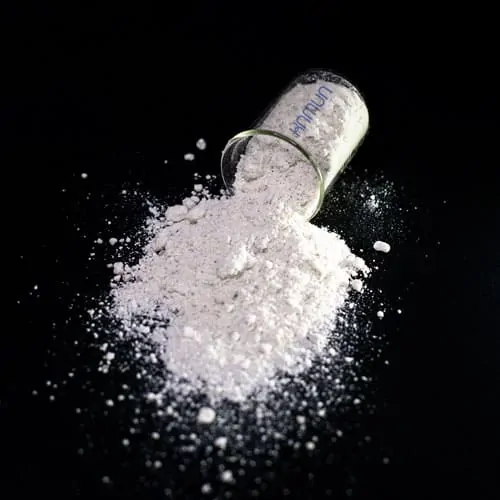Strontium chloride
Strontium is the 15th most abundant element in the earth’s crust, and due to its high reactivity with air, it is found in nature in the form of the mineral celestine (celestine with the chemical formula SrSO4) and strontianite (strontianite with the chemical formula SrCO3) and mainly from These two ores are mined. Strontium metal is commercially produced through its reduction by aluminum, which in its pure element is a yellow metal that is relatively malleable. The powder of this metal catches fire in the air due to its high reactivity, and different combinations of this element are usually used in fireworks. Strontium has four stable isotopes 87Sr, 86Sr, 84Sr, and 88Sr.
Strontium is similar to calcium in terms of atomic radius, so it can replace calcium in various compounds. In the body, it is also absorbed instead of calcium, which typically stable isotopes of strontium do not cause health problems.
Strontium chloride (SrCl2) is a mineral salt soluble in water and has a crystalline structure of fluorite, whose melting and boiling points are 875 and 1250 degrees Celsius, respectively.
The production method of strontium chloride
Strontium chloride is produced through the reaction of other strontium salts such as strontium carbonate or strontium hydroxide with hydrochloric acid:
Sr(OH)2 + 2HCl → SrCl2 + 2H2O
Crystallization in a cold water environment leads to the production of 6-hydrate strontium chloride, which turns into a di-hydrate salt at a temperature of 68 degrees Celsius, and its complete dehydration is performed at a temperature higher than 320 degrees Celsius.
Application of strontium chloride
strontium chloride as a precursor for the production of other strontium compounds such as strontium chromate (which is used as an anti-corrosion agent to protect aluminum), strontium carbonate (which is mainly used in cathode lamps and tubes as an X-ray absorber) ) and strontium sulfate (which is used as a producer of red color in firework products and in the production of ceramics and glass) is used:
SrCl2 + Na2CrO4 → SrCrO3 + 2 NaCl
SrCl2 + Na2CO3 → SrCO3 + 2 NaCl
In the presence of carbon dioxide in the aqueous medium, strontium precipitates as strontium carbonate salt:
SrCl2 + H2O + CO2 → SrCO3 + 2HCl
This chemical reacts with sodium sulfate to produce the slightly soluble salt of strontium sulfate:
SrCl2 + Na2SO4 → SrSO4 + 2NaCl
Other uses of strontium chloride include:
- Use fireworks to create the red color
- Use in the production of glass and metals
- Use of radioactive isotope (strontium 89) in the treatment of bone cancer
- Application in dentistry for tooth root protection
- Use as a substance to store ammonium in low pressure
Hamun Industrial Group is ready to supply and sell strontium chloride with high quality and competitive with foreign products for the country’s artisans.









